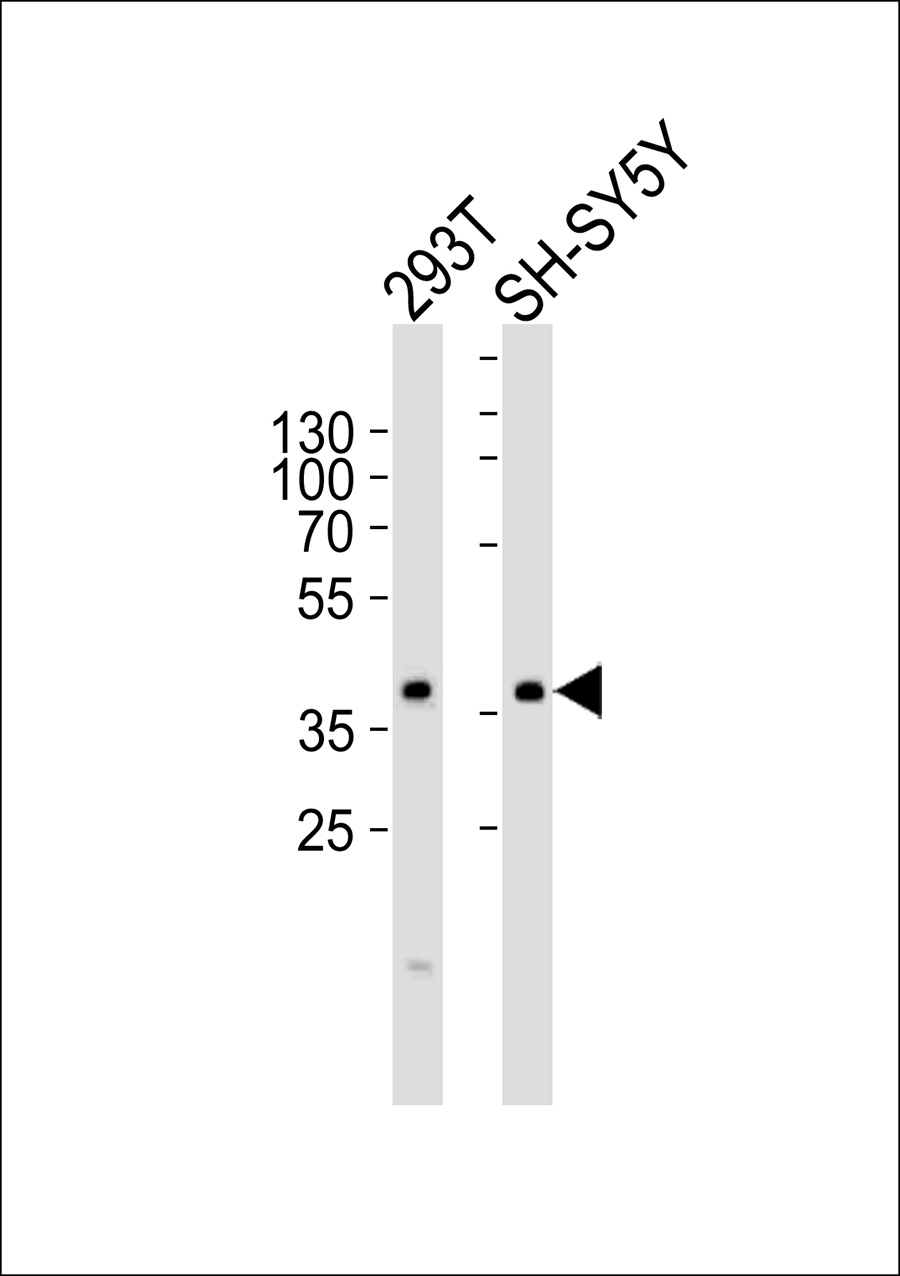CALB2 Antibody
Affinity-Purified Rabbit Polyclonal Antibody (Pab)
- SPECIFICATION
- CITATIONS
- PROTOCOLS
- BACKGROUND

Application
| WB |
|---|---|
| Primary Accession | P22676 |
| Reactivity | Human, Mouse, Rat |
| Host | Rabbit |
| Clonality | Polyclonal |
| Calculated MW | 32 KDa |
| Antigen Region | 215-242 aa |
| Gene ID | 794 |
|---|---|
| Other Names | Calretinin, CR, 29 kDa calbindin, CALB2, CAB29 |
| Dilution | WB~~1:1000 |
| Format | Rabbit IgG in phosphate buffered saline (without Mg2+ and Ca2+), pH 7.4, 150mM NaCl, 0.09% (W/V) sodium azide and 50% glycerol. |
| Storage Conditions | -20℃ |
| Name | CALB2 (HGNC:1435) |
|---|---|
| Synonyms | CAB29 |
| Function | Calcium-binding protein involved in calcium homeostasis and signal transduction. It plays a critical role in buffering intracellular calcium levels and modulating calcium-dependent signaling pathways (PubMed:2001709). Predominantly expressed in specific neuronal populations, influences synaptic plasticity and neuronal excitability, contributing to learning and memory (By similarity). During embryonic development, it facilitates neuronal differentiation and maturation (By similarity). |
| Cellular Location | Synapse {ECO:0000250|UniProtKB:Q08331}. Cell projection, dendrite {ECO:0000250|UniProtKB:Q08331}. Note=Located in dendrioles, small dendrites that makes up a brush structure found as the terminal specialization of a dendrite of a unipolar brush cell {ECO:0000250|UniProtKB:Q08331} |
| Tissue Location | Brain. |

Thousands of laboratories across the world have published research that depended on the performance of antibodies from Abcepta to advance their research. Check out links to articles that cite our products in major peer-reviewed journals, organized by research category.
info@abcepta.com, and receive a free "I Love Antibodies" mug.
Provided below are standard protocols that you may find useful for product applications.
Background
Calretinin is a calcium-binding protein which is abundant in auditory neurons.
References
Parmentier M.,et al.Adv. Exp. Med. Biol. 255:233-240(1989).
Parmentier M.,et al.Eur. J. Biochem. 196:79-85(1991).
Ota T.,et al.Nat. Genet. 36:40-45(2004).
Suzuki Y.,et al.Submitted (APR-2005) to the EMBL/GenBank/DDBJ databases.
If you have used an Abcepta product and would like to share how it has performed, please click on the "Submit Review" button and provide the requested information. Our staff will examine and post your review and contact you if needed.
If you have any additional inquiries please email technical services at tech@abcepta.com.













 Foundational characteristics of cancer include proliferation, angiogenesis, migration, evasion of apoptosis, and cellular immortality. Find key markers for these cellular processes and antibodies to detect them.
Foundational characteristics of cancer include proliferation, angiogenesis, migration, evasion of apoptosis, and cellular immortality. Find key markers for these cellular processes and antibodies to detect them. The SUMOplot™ Analysis Program predicts and scores sumoylation sites in your protein. SUMOylation is a post-translational modification involved in various cellular processes, such as nuclear-cytosolic transport, transcriptional regulation, apoptosis, protein stability, response to stress, and progression through the cell cycle.
The SUMOplot™ Analysis Program predicts and scores sumoylation sites in your protein. SUMOylation is a post-translational modification involved in various cellular processes, such as nuclear-cytosolic transport, transcriptional regulation, apoptosis, protein stability, response to stress, and progression through the cell cycle. The Autophagy Receptor Motif Plotter predicts and scores autophagy receptor binding sites in your protein. Identifying proteins connected to this pathway is critical to understanding the role of autophagy in physiological as well as pathological processes such as development, differentiation, neurodegenerative diseases, stress, infection, and cancer.
The Autophagy Receptor Motif Plotter predicts and scores autophagy receptor binding sites in your protein. Identifying proteins connected to this pathway is critical to understanding the role of autophagy in physiological as well as pathological processes such as development, differentiation, neurodegenerative diseases, stress, infection, and cancer.


